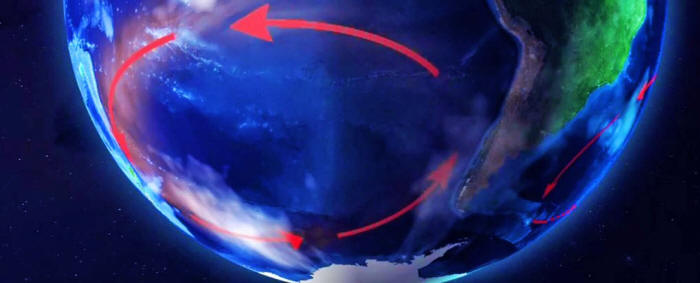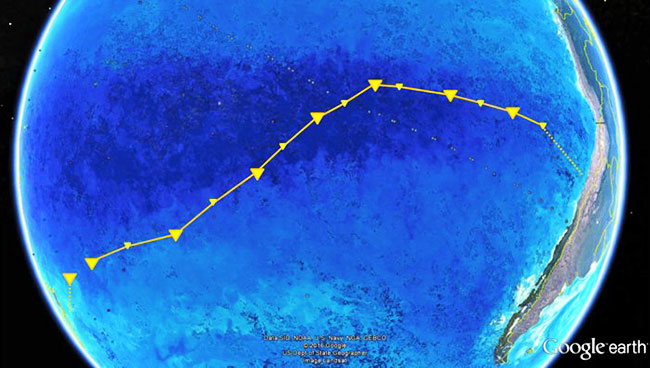|
from ScienceAlert Website
there's a place as far away from land as anyone on Earth could ever hope to get. The ocean is different there...
These distant waters lie at the heart of the South Pacific Gyre (SPG), the centre of which holds the 'oceanic pole of inaccessibility':
But aside from the ghosts of burnt-up satellites,
Nonetheless, stuff does live there, even if organic life in these waters (and the seabed below it) is few and far between, due to a range of factors.
These include,
In truth, though, we don't actually know all that much about the life-forms that inhabit the SPG, largely because of how hard it is to study this oceanic desert - due to both its extreme remoteness, and also how large it is, covering about 37 million square kilometers (14 million square miles).
Despite the challenges, a recent international research effort has given us what the scientists claim is an unparalleled glimpse at the microbial creatures that exist in these waters.
During a six-week expedition aboard the German research vessel RV Sonne from December 2015 to January 2016, a crew led by the Max Planck Institute for Marine Microbiology (MPIMM) sailed a 7,000-kilometers (4,350 miles) journey through the SPG from Chile to New Zealand.
En route, they sampled the microbial populations of the remote waters at depths between 20 to 5,000 meters (65 ft to 16,400 ft), using a newly developed analysis system that enabled the researchers to sequence and identify organic samples en route in as little as 35 hours.
RV Sonne's path crossing the SPG from Chile to New Zealand. (Max Planck Institute for Marine Microbiology Google Earth/NASA)
Among the microbes the team found, 20 major bacterial clades dominated the lot.
These were mostly organisms scientists have encountered in other gyre systems, such as,
...and more.
The distribution of these microbe communities depended largely on water depth, based around factors such as changes in temperature, nutrient concentrations, and availability of light.
One of the populations identified, called AEGEAN-169, was particularly numerous in the surface waters of the SPG, whereas previous research had only discovered them at 500-meters depths.
On the whole though, the sampling generally confirmed that the SPG is a,
In other words, the SPG can't shake off its 'desert' reputation just yet, but there is a bright side to all that organic absence:
The findings (On-Site Analysis of Bacterial Communities of the Ultraoligotrophic South Pacific Gyre) were reported in Environmental Microbiology...
|



